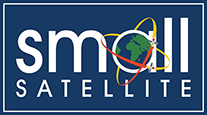Session
Poster Session 3
Location
Salt Palace Convention Center, Salt Lake City, UT
Abstract
The United States Space Force (USSF)'s objective to establish Tactically Responsive Space (TacRS) capabilities — the ability to integrate and launch a satellite within 24 hours — is hindered by the inflexible and time-consuming nature of conventional Thermal Control Systems (TCS). Current industry-standard design approach is a mission-specific process that relies on static materials with fixed thermo-optical properties, such as paints, silver teflon tapes, and multi-layer insulation blankets.
This traditional approach creates a significant bottleneck, as the development of the TCS cannot begin until a customer's payload and orbit details are confirmed. This introduces an incompressible 3-6 month lead time for hardware procurement, fabrication, and integration into the critical path of the satellite build. The resulting thermal system is permanently configured for a single mission profile, making it impractical to adapt to evolving requirements or different orbits without a complete and costly redesign. This legacy methodology is fundamentally incompatible with the need for rapid, versatile, and reconfigurable satellite buses required for TacRS missions.
Document Type
Event
Development and Qualification of an E Ink Thermal Control System for Tactically Responsive Satellites
Salt Palace Convention Center, Salt Lake City, UT
The United States Space Force (USSF)'s objective to establish Tactically Responsive Space (TacRS) capabilities — the ability to integrate and launch a satellite within 24 hours — is hindered by the inflexible and time-consuming nature of conventional Thermal Control Systems (TCS). Current industry-standard design approach is a mission-specific process that relies on static materials with fixed thermo-optical properties, such as paints, silver teflon tapes, and multi-layer insulation blankets.
This traditional approach creates a significant bottleneck, as the development of the TCS cannot begin until a customer's payload and orbit details are confirmed. This introduces an incompressible 3-6 month lead time for hardware procurement, fabrication, and integration into the critical path of the satellite build. The resulting thermal system is permanently configured for a single mission profile, making it impractical to adapt to evolving requirements or different orbits without a complete and costly redesign. This legacy methodology is fundamentally incompatible with the need for rapid, versatile, and reconfigurable satellite buses required for TacRS missions.


